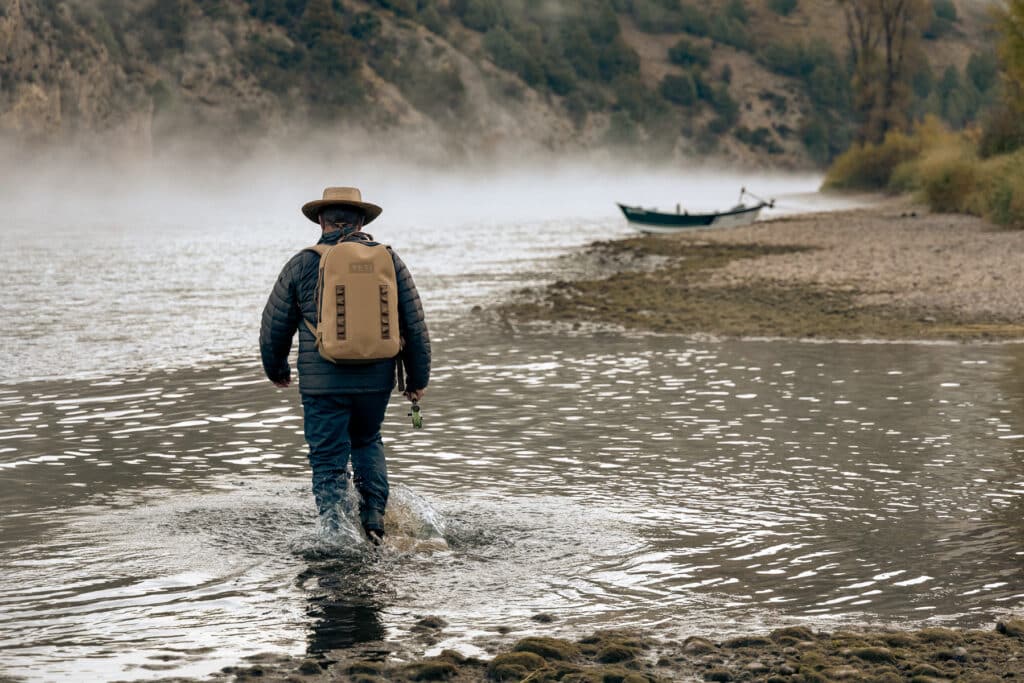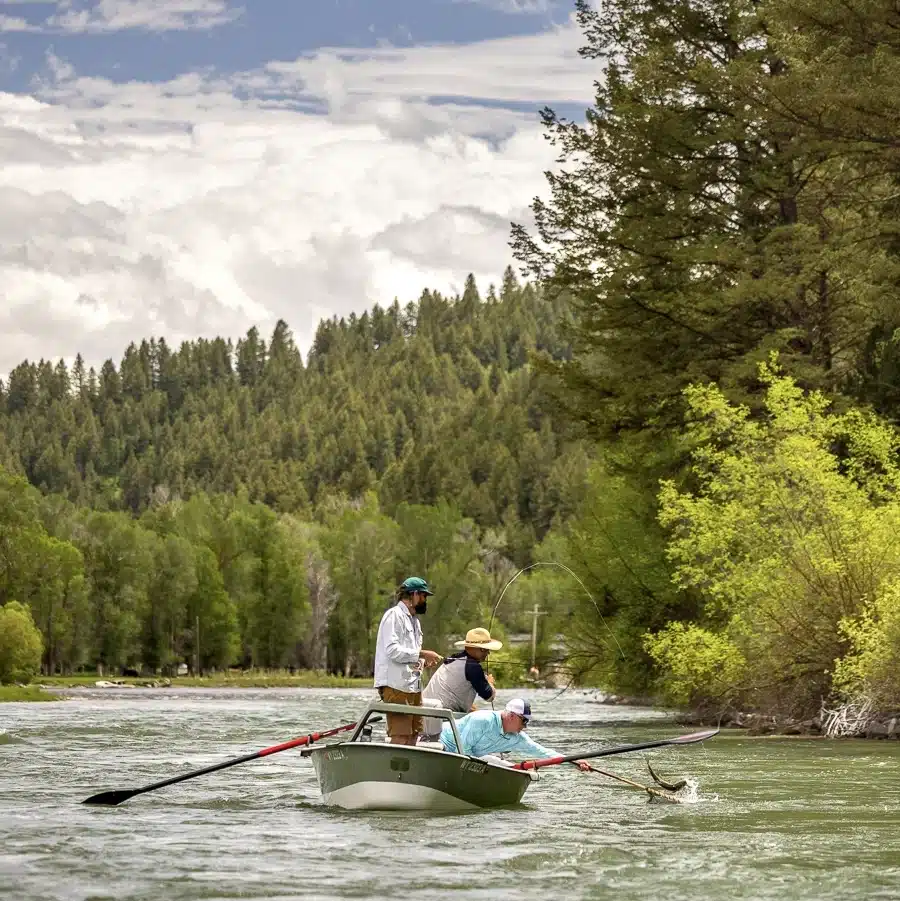Hatch Chart
-
Early Spring, April and May
As the snow starts to melt from the Caribou and Big Hole mountains in April, the South Fork comes alive. Water temperatures begin to rise, and the river’s aquatic insects and small baitfish begin to stir. Trout move from the depths into more dependable feeding lanes and, as the days get longer and warmer, the feast is on. It’s a great time to be on the river, and anglers can cast bright streamers toward the banks to mimic small fish or dredge deep with double-nymph rigs featuring big, rubber-legged creations that early-season trout can’t pass up. And, on blustery spring afternoons, small Blue-winged olive mayflies offer dependable dry-fly action. Then, right around Mother’s Day in mid-May, the caddis start to pop. It’s the first substantial hatch of the year on the South Fork, and anglers lucky enough to experience it can enjoy some of the best dry-fly fishing of the season in virtual solitude.
-
June
With June comes big water. How big, of course, depends on the snowpack in the surrounding mountains and the demand for irrigation water farther downstream. The South Fork is a tailwater below Palisades Reservoir, and it’s a vital water delivery conduit to grain, potato and beet farmers downstream. But, just because the river is moving doesn’t mean it’s not fishable — in fact, just the opposite is true. June is a great time for anglers to cast streamers or try their hand at nymphing on the South Fork. In early June, in the side channels and the sloughs, Blue-winged Olives are still around, particularly on cloudy or cool days, and caddisflies are still popping, so dry-fly fishing isn’t out of the question.
But things really start to get interesting on the river in mid- to late June, when golden stoneflies and the first of the river’s world-famous salmonflies start to crawl out of the river and emerge. The South Fork’s trout wait all year for the stonefly nymphs to start moving into the shallows, and from the second week of June into mid-July in some years, it’s a big-fly bonanza as the nymphs turn into adult stoneflies that can be two inches long and very clumsy on the water. This is the hatch that made the South Fork famous.
Toward the end of June, big Green Drakes make their presence known giving both anglers and South Fork trout another dry-fly option.
-
July and August
The stonefly hatch continues, moving up the South Fork in early July, through the canyon. It stretches all the way to the lip of the dam, generally by the second week of July. This is also when the river starts to settle into its “normal” summer flows (and, of course, this depends on the amount of water stored in regional reservoirs, Palisades included) around 14,000 cubic feet per second.
July is also when the river is at its busiest, but the South Fork boasts between 5,000 and 6,000 fish per mile — there are plenty of trout to go around. July hatches can be prolific. If the river gets some rain, Green Drakes can hang out well into July, and just as salmon flies start to dwindle, Pale Morning Duns take over and provide dry-fly action throughout summer. Starting in late July, big terrestrial bugs — grasshoppers, beetles and ants — start to show up on the South Fork’s banks, and they become the primary attraction through the end of summer. This is the best time to plan an overnight trip on the river. Anglers who camp along the river can be on the water for the morning caddis hatch, fish through the day using big Chernobyls and Fat Alberts on top and then wrap up the day as the caddis come back out in the low light just before dusk. For many, this is when the South Fork is at its finest, and fishing early and late in the day is a great way to beat the crowds.
-
September and October
Terrestrial season on the South Fork generally lasts through September and, in some years, if the first frost comes late, it can last into October. This is also a great time to float the river — water levels start to drop, and many gravel bars that have been flooded all summer long become exposed, offering anglers the chance to get out of the boat, where they can walk and wade and stalk hungry fall trout. When the weather gets cooler — and it’s just a matter of time before it does — it’s a great time to throw streamers to the South Fork’s browns that are starting to stage for the fall spawn, and to rainbows and cutthroats that are fattening up before the lean and cold winter season. Also, as air and water temperatures drop a bit, mahogany duns join blue-winged olives for afternoon hatches that can be absolutely epic. Many consider fall the best time of year to be on the South Fork.
-
November into Winter
During most years in eastern Idaho, November can still be pretty nice for the fly angler. Streamer fishing is still at its best—post-spawn browns are still aggressively defending their redds, and rainbows and cutthroats are trying desperately to put on weight before the cold sets in. Midge and BWO hatches are still strong, depending on weather, and anglers who can layer up and tough out the chilly weather can have the river to themselves. Eventually, the snow will fly, and the South Fork’s banks will ice up. That’s when it’s time to pack it in and give the river a
rest until spring.


